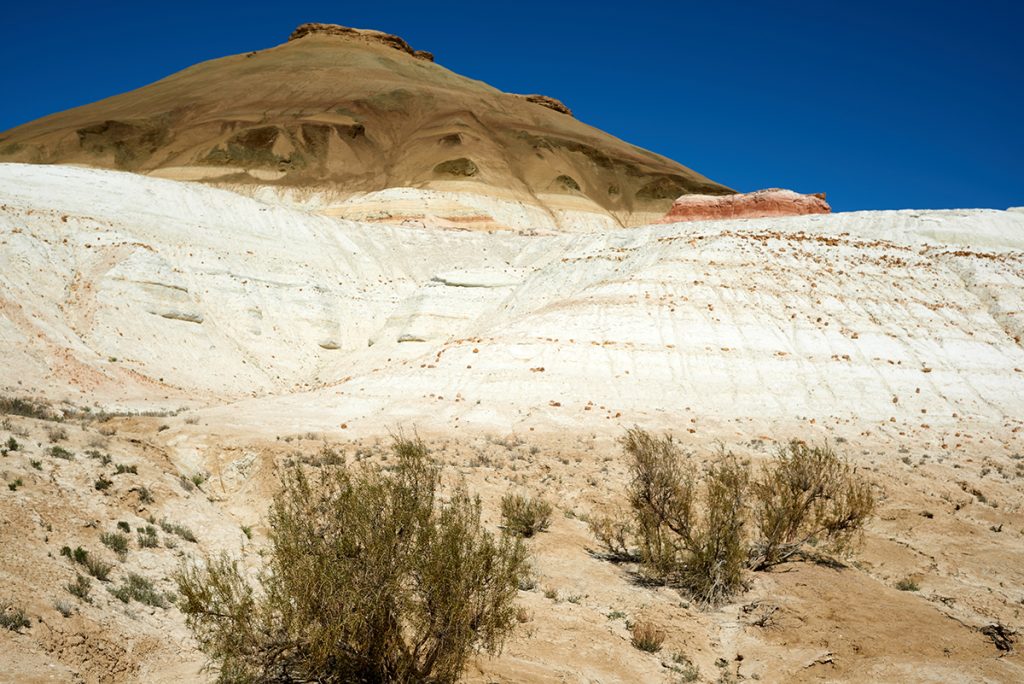Mount Bokty is one of the state–protected natural monuments located in the Karagiye district of the Mangystau region.

Probably every Kazakh citizen has seen an image of this isolated 165-meter mountain, located at an altitude of 8 meters above sea level. Since it is depicted on our 1000 tenge banknote. A distinctive feature of a sedimentary mountain is the perfect trapezoidal size and layers of multi-colored rocks that are clearly visible: the base starts out white, yellowish and turns into a pink, red hue. And by the middle it turns brown. This current appearance of the mountain is caused by continuous winds and erosion.
In appearance, many tourists compare Mount Bokty to an overturned ship. But if you look from the other side, it looks like an artificial pyramid created by nature.

Around the mountain there is dried-up salt marsh, where the area of the wasteland is tens of square kilometers. Although the fauna is poor, in this area, which was once the ocean floor, you can find the teeth of ancient animals or footprints imprinted on the rocks.
The climate in the area of Mount Bokty is sharply continental, with dry and hot summers. There is little snow here in winter, and it rarely rains in summer. Therefore, there are no green spaces except those characteristic of the desert. As for animals, the only insects you can find here are lizards, scorpions and grazing livestock.

The closest city to this natural site is Zhanaozen. It is located approximately 90 kilometers from the mountain. It is impossible not to visit this place when arriving in Mangystau. Firstly, Mount Bokty stands out for its beauty. In addition, the mountain is located at the junction of roads to such attractions as the Senek sands, the Bozzhyra gorge, the Beket-ata and Shopan-ata mosques.



